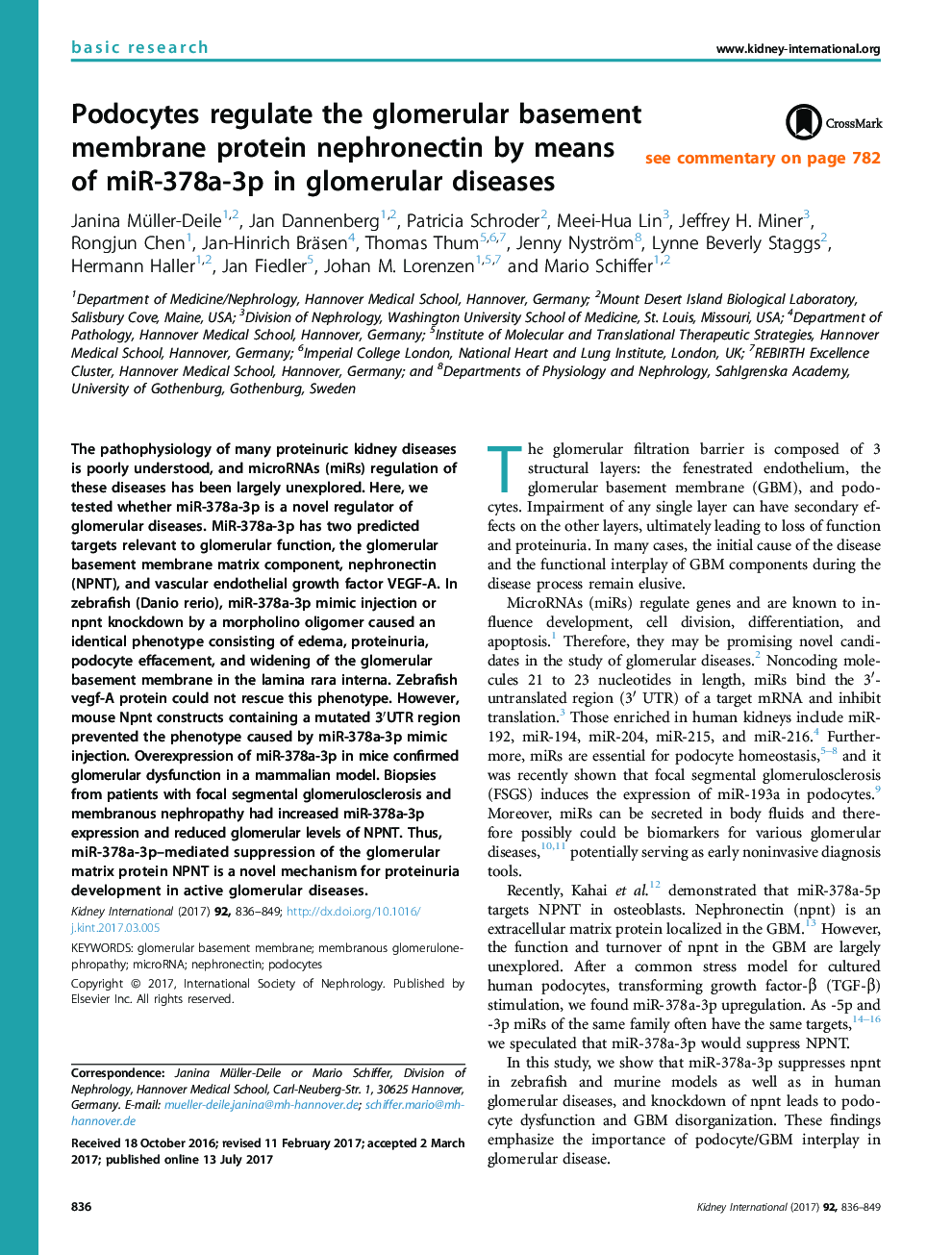| Article ID | Journal | Published Year | Pages | File Type |
|---|---|---|---|---|
| 8773187 | Kidney International | 2017 | 14 Pages |
Abstract
The pathophysiology of many proteinuric kidney diseases is poorly understood, and microRNAs (miRs) regulation of these diseases has been largely unexplored. Here, we tested whether miR-378a-3p is a novel regulator of glomerular diseases. MiR-378a-3p has two predicted targets relevant to glomerular function, the glomerular basement membrane matrix component, nephronectin (NPNT), and vascular endothelial growth factor VEGF-A. In zebrafish (Danio rerio), miR-378a-3p mimic injection or npnt knockdown by a morpholino oligomer caused an identical phenotype consisting of edema, proteinuria, podocyte effacement, and widening of the glomerular basement membrane in the lamina rara interna. Zebrafish vegf-A protein could not rescue this phenotype. However, mouse Npnt constructs containing a mutated 3â²UTR region prevented the phenotype caused by miR-378a-3p mimic injection. Overexpression of miR-378a-3p in mice confirmed glomerular dysfunction in a mammalian model. Biopsies from patients with focal segmental glomerulosclerosis and membranous nephropathy had increased miR-378a-3p expression and reduced glomerular levels of NPNT. Thus, miR-378a-3p-mediated suppression of the glomerular matrix protein NPNT is a novel mechanism for proteinuria development in active glomerular diseases.
Related Topics
Health Sciences
Medicine and Dentistry
Nephrology
Authors
Janina Müller-Deile, Jan Dannenberg, Patricia Schroder, Meei-Hua Lin, Jeffrey H. Miner, Rongjun Chen, Jan-Hinrich Bräsen, Thomas Thum, Jenny Nyström, Lynne Beverly Staggs, Hermann Haller, Jan Fiedler, Johan M. Lorenzen, Mario Schiffer,
